- Home
- Amish Tripathi
Raavan- Enemy of Aryavarta Page 5
Raavan- Enemy of Aryavarta Read online
Page 5
Kaikesi and Mareech’s parents, it transpired, had decided that it was best to excommunicate their daughter as soon as they heard that she had given birth to a Naga child. By this time, the well-kept secret of Raavan’s identity had also been revealed. And, of course, everyone knew that it was Kaikesi’s fault. After all, the revered Rishi Vishrava could not be responsible for the bad karma that gave birth to their Naga offspring.
Even those who sympathised with Kaikesi’s plight had no inclination, or will, to take on their community or their elders.
Within a day of reaching Kannauj, the four of them found themselves outside the city once again, on the banks of the holy Ganga, wondering where they could go.
‘What do we do now?’ asked Kaikesi.
Mareech looked away at the river, his mind seething with anger. He couldn’t believe that his family had turned its back on them. Even those who had initially supported his decision to go to Vishrava’s ashram to protect his sister had changed their tune. They’d had the temerity to tell him, ‘We didn’t expect Kaikesi to actually give birth to a Naga! How could we have expected that?’
‘Dada,’ Kaikesi said again, ‘what is to become of us?’
‘I don’t know, Kaikesi!’ said Mareech. ‘I don’t know!’
Raavan had been using a smooth stone to sharpen the blade of his knife. He looked up and said, ‘I do. Let’s go further east. Let’s go to Vaidyanath.’
‘Vaidyanath?’ asked Mareech, surprised. ‘What’s in Vaidyanath?’
The Kanyakumari, thought Raavan. But, for some reason, he didn’t want to say it aloud. He started sharpening his knife again. ‘I know who’s not there: my father.’
Mareech kept quiet.
‘Let’s travel eastwards, towards the rising sun. Some light of wisdom may dawn on us as well.’
‘You made that line up yourself?’ Mareech asked, impressed.
Raavan glanced at him superciliously. ‘No, I read it somewhere. You should try reading too, Uncle. It’s a good habit.’
Mareech rolled his eyes and looked away. Pesky kid.
They found lodgings in a charitable guesthouse in a small village, a short distance from the famous Vaidyanath temple. Vaidyanath was famed for its physicians, and Kaikesi lost no time in taking Kumbhakarna to one, to see if the outgrowths on his shoulders and ears could be removed. The doctor, however, advised against it. There was too much vascularity in the outgrowths, too many blood vessels, and removing them surgically could lead to the death of the child, he said. In any case, Kumbhakarna seemed like a happy baby whose outgrowths, unusually, did not cause him pain. It was best that he learn to live with them.
Kaikesi was deeply disappointed. So was Raavan. But the reason for his disappointment was different. Not that he spoke of it to anyone.
The next morning, at the crack of dawn, they left for the main Vaidyanath temple. It would soon be time for the morning aarti, the public offering of devotion to the Mahadev, Lord Rudra.
The Vaidyanath temple was, in effect, a huge complex of many temples, set in the middle of a dense jungle. There were temples dedicated to the previous Vishnus, to the many Goddesses who protected India, to Lord Indra, Lord Varun, Lord Agni, and others. Of course, the largest temple was dedicated to Lord Rudra. The Mahadev. The God of Gods.
The temple complex was separated from the flood-prone Mayurakshi by marshlands and flood-plains that sponged the excess waters of the tempestuous river during the monsoon season, thus keeping the temples safe. Several species of medicinal herbs and roots grew in the swamp, making the small temple-town a treasure trove of medicines for the treatment of most diseases. In fact, its name derived from this: Vaidyanath, the Lord of the Medicine Men.
The main temple of Vaidyanath was shaped like a giant lotus. It had an uncomplicated but enormous core, with a hall, the sanctum sanctorum, and a spire built of stone and mortar, following the standards prescribed in the Aagama architectural texts. The main spire shot up a massive fifty metres from a fifteen-metre base. On top of the base, a hundred and eight wooden ‘petals’ had been affixed—an architectural triumph. Each petal was four times the size of a full-grown man. Made from the wood of robust sal trees, among the best hardwoods anywhere in the world, each petal had been further hardened through a process of chemical treatment and painted with a pink dye. They were laid out on four levels, one above the other, to create a gargantuan lotus flower that encompassed the core of the temple. The main spire was painted yellow and grew out of the centre of this lotus like a giant pistil. The base was coloured green, to signify the stem of the lotus. The elongated base was hollow and functioned as a tunnel-shaped entry into the temple.
It was almost surreal. And deeply symbolic.
The lotus was a flower that retained its fragrance and beauty even while growing in slush and dirty water. It posed a silent challenge to the humans who visited the temple, to be true to their dharma even if those around them were not. The number of petals—one hundred and eight—was significant too. The people of India, the followers of the dharmic way, attached a huge significance to the number. They believed that it was a divine number repeated again and again in the structure of the universe. The diameter of the sun was a hundred and eight times the diameter of the earth. The average distance from the sun to the earth was a hundred and eight times the diameter of the sun. The average distance of the moon from the earth was a hundred and eight times the diameter of the moon. There were several other examples of this number appearing almost magically in the universe. Over time, it had been incorporated into many rituals. For instance, it was recommended that a mantra be chanted a hundred and eight times.
At the far end of the temple, in the sanctum sanctorum, was a life-size idol of Lord Rudra. The Lord sat cross-legged, like a yogi, his eyes closed in concentration. Right behind him was a massive three-metre high lingam-yoni—an ancient depiction of the One God. The lingam was in the shape of half an egg, and some ancients believed that it represented the Brahmanda, or the Cosmic Egg, which allowed creation to coalesce. Others believed that it was a representation of masculine energy and potential. At the base of the lingam was a yoni, often translated as ‘womb’, but literally the ‘origin’ or ‘source’; a symbol of feminine energy and potential. The union of the lingam and the yoni represented creation, a result of the partnership between the masculine and the feminine, an alliance between passive Space and active Time from which all life, indeed all creation, originated.
Outside the sanctum sanctorum, in the centre of the lotus-shaped temple, was the main gathering hall for devotees.
By the time Raavan and his family reached the temple, they had little time to admire either its beauty or symbolism. The aarti had already begun in the main hall. And it was spectacular.
Thirty massive drums were placed sideways on large stands positioned throughout the hall. Big, burly men holding drumsticks the size of their own arms stood beside them, pounding the drums repeatedly.
Dhoom-Dhoom-danaa-Dhoom-Dhoom-danaa.
The beat and the rhythm pulsated through Raavan’s body. He could feel the waves of sound in his bones. And like everyone else in this throng of Lord Rudra’s devotees, he too was compelled to dance to the tune. Even Kumbhakarna, the little baby, shook his arms excitedly.
Dhoom-Dhoom-danaa-Dhoom-Dhoom-danaa.
Dhoom-Dhoom-danaa-Dhoom-Dhoom-danaa.
As the music gained in tempo, male and female devotees surged across the hall, towards the two-hundred-odd bells that hung from different points. They began ringing them now. In perfect harmony.
Then, in a low voice, the devout, in tune with each other, began chanting a simple disyllabic word. A word of immense power.
‘Maha… dev!’
‘Maha… dev!’
‘Maha… dev!’
As the chanting gained momentum, the voices grew louder and louder. In ecstatic devotion to the Mahadev. The Greatest God. The God of Gods. Lord Rudra himself.
The drums kept pace with the chanting.
Dhoom-Dhoom-danaa-Dhoom-Dhoom-danaa.
Dhoom-Dhoom-danaa-Dhoom-Dhoom-danaa.
Raavan looked around him. For the first time in his life, he experienced the sheer joy of being a part of something bigger than himself. He was a devotee of Lord Rudra. They all were. And there was no differentiation here. None at all. Rich men danced next to their visibly poor compatriots. Students pirouetted next to their teachers. People with deformities chanted beside soldiers blessed with formidably fit bodies. Purist priests danced with hedonist aghoras. Women danced with men and transgender people. Children with their parents. People of all denominations and castes. Indians and non-Indians.
No differentiation.
Freedom.
Freedom from judgement. Freedom from expectations. Freedom from right and wrong. Freedom from Gods and Demons. Freedom to be oneself. And revel in the union with Lord Rudra.
Dhoom-Dhoom-danaa-Dhoom-Dhoom-danaa.
‘Maha… dev!’
Dhoom-Dhoom-danaa-Dhoom-Dhoom-danaa.
‘Maha… dev!’
The aarti ended on a high, with a wild, throaty cry that echoed through all of Vaidyanath.
‘Jai Shri Rudra!’
Glory to Lord Rudra.
As though on cue, the drums and the bells fell silent. Only the echoes remained, lingering in the hushed silence of a deep and blissful devotion.
The aarti had lasted no more than five minutes. But it gave the joy of a lifetime to all those who were present there. Raavan glanced around him. There was ecstasy on every face. He looked at his uncle Mareech and his mother Kaikesi. Tears of joy were flowing down their cheeks. Raavan felt his own cheeks and was surprised to find them moist.
He whispered to himself, ‘Jai Shri Rudra!’
Loud voices were suddenly heard from the crowd.
‘Kanyakumari!’
‘Kanyakumari!’
At the end of the aarti, it was customary for the Kanyakumari to perform the first traditional puja, the Rudrabhishek of the lingam-yoni. The Virgin Goddess had come forward to fulfil her duty.
Everybody looked up. Craning their necks. Balancing on their toes to look beyond those in front of them. All keen to catch a glimpse of their living Goddess.
But not Raavan. He kept his eyes on the ground. His fists clenched tight.
‘Is this a new Kanyakumari?’ asked Kaikesi.
Mareech glanced at his sister before turning back to look at the Kanyakumari, his hands held together in devotion. ‘Yes. I am told the previous Kanyakumari got her first period a few months ago. She has moved on and a new Kanyakumari has been recognised.’
Kaikesi swayed gently, rocking baby Kumbhakarna back to sleep. ‘I’ve always wondered what happens to them afterwards. Where do they go? What do they do?’
Mareech shrugged. ‘I don’t know. Maybe they go back to their villages once they are not Kanyakumaris anymore. But how can anyone find them? Very few even know their original birth-names.’
Raavan raised his head and stared at the new Kanyakumari. Hatred flashed in his eyes.
For a brief, insane moment, he considered lunging forward and striking her dead. That would get rid of her forever. But he banished the thought as quickly as it had occurred to him. It was pointless. They would simply recognise another girl-child as the Kanyakumari. His Kanyakumari was not coming back. He didn’t know where she was. He didn’t even know her real name.
He knew almost nothing. All he remembered were her words. Her voice. And her face.
Her angelic face was burnt into his mind. A face that made all the pain go away.
The thought he had been avoiding finally burst through to his consciousness. He was never going to see her again. She was gone from his life. Forever.
He felt his breath constricting. As though he was suffocating.
He took his mother’s hand. ‘We have to go.’
‘What? Why? The Kanyakumari—’
‘You can ask for her blessings tomorrow. Let’s go.’
Raavan turned and walked away.
Chapter 5
‘Leave?’ asked Mareech, surprised. ‘Why?’
Mareech, Kaikesi, Raavan and Kumbhakarna were back in their small room in the guesthouse.
Raavan’s voice was calm. ‘I had hoped we could find a cure for Kumbhakarna here. But the doctors have told us there is not much they can do. So there’s no point in hanging around anymore.’
‘But we didn’t come here only to find a cure for Kumbhakarna. It’s a safe place, at least for some time.’
‘I don’t want to just be safe. I want to achieve something. I can’t do that here.’
Mareech sighed, a little irritated with this precocious young boy. ‘Raavan, you are nine years old. You are a child. Just take it easy and let the adults—’
‘I am not a child,’ said Raavan firmly, interrupting Mareech. ‘I am the eldest male in my family. I have responsibilities.’
Mareech tried hard to supress a smile. ‘All right, great elder, tell me, which place do you think would be better than Vaidyanath? There is a tradition of selfless charity here. Your mother and brother can live on the free food and lodging that’s provided at this guesthouse. How will you feed them if we go elsewhere?’
‘I have read of great ports to the east which trade with lands like Bali and Malay. We could go there. We could work there.’
‘Raavan, don’t assume that it will be easy to find—’
‘I have already decided, Uncle,’ said Raavan. ‘I have spoken to maa as well. The question is, what do you want to do?’
Mareech looked at his sister in surprise. He didn’t know that she had already acquiesced to Raavan’s demand. The look on Kaikesi’s face was a mixture of helplessness and resignation. Many years later, Mareech would remember this as the first of many surrenders. The moment when his relationship with Raavan changed. The moment Raavan went from being his young nephew to his future lord and commander.
‘All right,’ he said. ‘Let’s go further east.’
It had been four years since Raavan and his family moved east, to a small town on the shore of the Chilika lake.
Chilika was a vast lagoon, among the largest in the world, extending over more than 1,000 sq km, north-east to south-west, on India’s eastern coast. Some of the major distributaries of the mighty Mahanadi River, such as the Daya and Luna rivers, drained their waters into the lake. Fifty other minor rivers fed the Chilika besides. During the monsoon, the heavy downpour caused the lake to swell even more.
A first-time visitor to the kingdom of Kalinga, settled around the delta of the Mahanadi, could be forgiven for assuming that the fertile land, abundance of fresh water and a regular bountiful monsoon were responsible for its immense prosperity. In reality, while agriculture was indeed a munificent source of the kingdom’s riches, its overflowing coffers were the result of brisk trade with other regions, near and far.
And the centre of this trade was the Chilika lake.
Given its dimensions, Chilika allowed for the construction of several ports along its shores. The deep draught of the lake meant even the biggest seafaring ships could sail into it comfortably. Several islands in the lake, most of them close to its seaward side, served as minor ports for smaller ships, thus dividing the heavy traffic of vessels. Most crucially, the lake’s eastern boundaries, which separated it from the Eastern Sea, were marked by a series of sand flats. These worked as breakwaters to stop the stormy sea from intruding into Chilika, making the lake waters a calm refuge for ships. Two openings in these sand flats, the broader one at the northern end and a narrow one at the southern end, allowed ships to sail into the lake. Furthermore, from Chilika, one could sail up the Mahanadi to the kingdom of South Kosala and then travel northwards into the heartlands of the Sapt Sindhu.
Chilika provided a safe and secure harbour, and afforded easy access to a rich hinterland. In fact, the richest hinterland in the world.
At any point in time, there were at least a few hundred ships, large and
small, anchored in the lake. And a smaller number of ships waiting to berth. Cargo was constantly being loaded or taken off vessels. Traders could be heard negotiating aggressively, while Customs officials tried to extract the tax revenues due to the state. Sailors were routinely spotted making their way to the shore, on their day off, looking for wine and women. Tavern owners and women tried their best to attract as many sailors as possible. Meanwhile, soldiers on duty worked to maintain some semblance of order amidst the chaos.
What made Chilika a favourite among traders was that, unlike in other parts of India, trading activities were not unduly restricted here.
Over the past few decades, in many parts of the Sapt Sindhu, ordinary people as well as the ruling families had turned against the trading caste of Vaishyas on account of what was perceived to be large-scale corruption. Severe restrictions had been placed on trading activities. Traders needed licenses at every stage, and these had to be procured from non-Vaishya administrators. As it turned out, far from ending corruption, an element of bribery—large amounts at that—was added to the process. On top of that, the administrators, in their arrogance, did not think they were doing anything wrong in leeching bribes from the traders. They looked at it as a way of punishing the ‘thieves’.
Of course, any wise person would know that to blame an entire community for the faults of a few was to take an extremely myopic view of things. Every society needs entrepreneurs and merchants as much as it needs intellectuals, warriors and artisans. And an imbalance in the structure, favouring a particular class, ends up creating problems. Unfortunately, there was a shortage of wisdom in the ruling class in the Sapt Sindhu and the trading community continued to be persecuted.
Eventually, traders from across the Sapt Sindhu got together under the leadership of Kubaer, the wily businessman-ruler of Lanka. Kubaer struck a deal with the emperor of the Sapt Sindhu, and its subordinate kingdoms, by which he took over all their trading activities and paid the empire a large share of the profits. However, this did nothing to make the traders’ lives easier. Kubaer’s method of maximising his profits was to squeeze their margins. By allying with him, the traders, it turned out, had merely jumped from the frying pan into the fire.

 Scion of Ikshvaku
Scion of Ikshvaku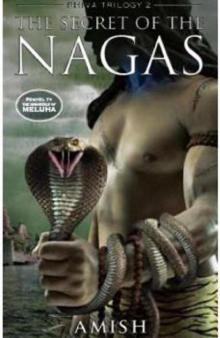 The Secret of the Nagas
The Secret of the Nagas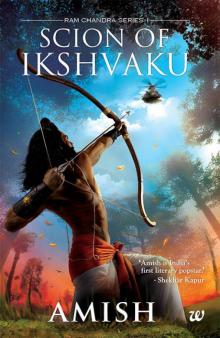 Scion of Ikshvaku (Ram Chandra Series) FlyLeaf.ORG
Scion of Ikshvaku (Ram Chandra Series) FlyLeaf.ORG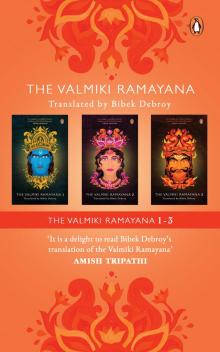 The Valmiki Ramayana
The Valmiki Ramayana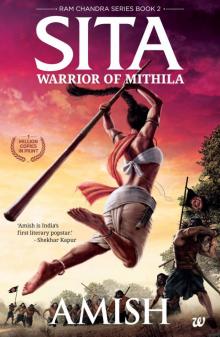 Sita: Warrior of Mithila
Sita: Warrior of Mithila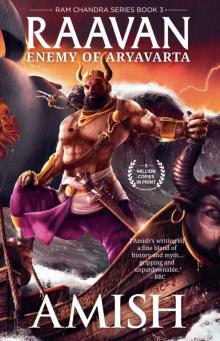 Raavan- Enemy of Aryavarta
Raavan- Enemy of Aryavarta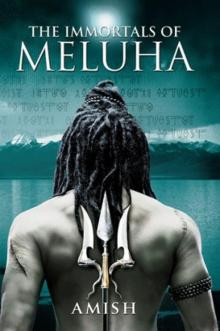 Immortals of Meluha
Immortals of Meluha